-
Teleoperated robots for smarter disaster response

Electrical engineers have developed telerobotics technology which could make disaster response faster and more efficient. The researchers aim to combine existing “smart” technologies better to serve society during disaster and crisis response. This includes using teleoperated robots for rescues and safety operations; a high-tech dispatch system that gathers information from cameras and sensors and pushes it out to first responders; drones for damage surveillance and rescues; and vests outfitted with sensors and GPS tracking to be worn by search-and-rescue dogs.
-
-
Farmers try to cope with the challenges posed by extreme weather
Across the country, farmers are reporting that they are at yet another critical juncture for agriculture. Citing more unpredictable and severe weather due to climate change, scientists are researching defensive measures and looking to previous agricultural challenges for inspiration. Some are looking to the way individual farmers and government agencies addressed the Dust Bowl hardships of America during the Great Depression as a source of inspiration.
-
-
Experts: Fracking-induced earthquakes are real, requiring scientific guidelines
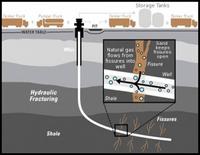
In the wake of increased seismic activity and rare advanced warnings, seismologists are urging the U.S. Geological Survey to include quakes resulting from hydraulic fracturing for underground oil and gas, or fracking, as an estimated hazard.
-
-
Miami “Ground Zero” for risks associated with sea level rise
During a special Senate hearing last month in Miami Beach, Senator Bill Nelson (D-Florida) described Florida as “Ground Zero” for climate change and the threat it poses to coastal communities. Sea level rise is especially worrisome to Floridians because Miami has the most property assets at risk in the world, according to the World Resources Institute(WRI). Miami has $14.7 billion in beach front property. Also, fifteen million out of the state’s twenty million residents live in coastal communities vulnerable to sea level rise.
-
-
Researchers map 198,000 glaciers to improve sea-level rise estimates
An international team of researchers has completed the first mapping of virtually all of the world’s glaciers — including their locations and sizes — allowing for calculations of their volumes and ongoing contributions to global sea rise as the world warms. The team mapped and catalogued some 198,000 glaciers around the world as part of the massive Randolph Glacier Inventory, or RGI, better to understand rising seas over the coming decades as a result of melting glaciers.
-
-
As fracking activity grows in Mexico, so does the number of fracking-induced tremors
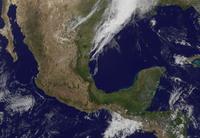
Mexico has the fourth largest amount of recoverable shale gas in the world, with 681 trillion cubic feet. As fracking activity has increased in the state of Nuevo Leon, so have the number of tremors. Between January and mid-April, forty-eight tremors, some reaching a magnitude of roughly 4.3, were recorded across the state of Nuevo Leon, compared to two tremors in the same period last year.
-
-
Ice melting in East Antarctica may lead to unstoppable sea-level rise
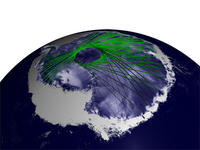
The melting of a rather small ice volume on East Antarctica’s shore could trigger a persistent ice discharge into the ocean, resulting in unstoppable sea-level rise for thousands of years to come, a new study finds. East Antarctica’s Wilkes Basin is like a bottle on a slant, say the study’s authors. Once uncorked, it empties out. The basin is the largest region of marine ice on rocky ground in East Antarctica.
-
-
Wetland preservation is good business
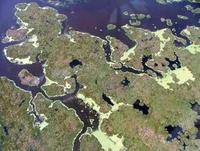
A recently published study is making the case for wetland preservation by highlighting the economic incentives that such preservation could provide to urban centers.Infrastructure investment in urban waterfronts could soon be seen as one of the best economic decisions a city could make. The National Oceanic and Atmospheric Administration says that “$1 million invested in coastal restoration creates 17.1 jobs, compared to just 8.9 jobs for every $1 million invested in oil and gas development.”
-
-
Longer periods of tornado activity are more destructive, but also more predictable
Significant tornado outbreaks, and especially strong tornadoes, are more likely occur within periods of activity lasting three or more days, according to a new study. The study examined thirty years of U.S. weather records and found that an outbreak of twenty or more reported tornadoes had a 74 percent probability of occurring during a period of tornado activity lasting three or more days. During those same periods, a tornado rated 3 or higher on the Enhanced Fujita scale had a 60 percent probability of hitting.
-
-
Oklahoma worries that fracking-induced earthquakes threaten the state’s bridges
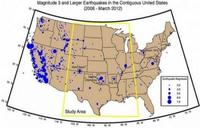
Many residents in Oklahoma are questioning whether hydraulic fracking is to blame for the sudden increase in earthquakes, but for transportation officials, the security of the state’s 6,800 bridges is the immediate concern. There are 468 bridges in Oklahoma which are classified as “structurally deficient,” and most were not built with frequent earthquakes in mind. Earthquakes have become so common, however, that inspectors have had to inspect bridges several times a week.
-
-
Florida moves to protect coastal roads from sea level rise
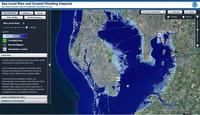
Alton Road is a few blocks west of the Atlantic Ocean, and is Miami Beach’s lowest point, at 2.8 feet above sea level. Trouble is, as a result of sea level rise, inundation tide now routinely reaches 3.4 feet above sea level. Geologist have long warned of the impact sea level rise would have on Florida’s coastal infrastructure, and they view Alto Road as Ground Zero, saying that at some point in the near future, water from flooding will not recede. The Florida Department of Transportation (FDOT) is taking steps to protect coastal transportation infrastructure from sea level rise.
-
-
New York public transit systems preparing for sea-level rise
The Metropolitan Transportation Authority (MTA), which operates many New York state public transit lines, is beginning measures to factor for future sea-level rises within its projected five-year capital plans.Tobey Ritz, chief engineer of capital engineering at Metro-North, said: “It’s not so much for us to pick which study [of sea-level rise] is right, but to look at the entire range [of sea-level rise predictions], look at the time frames that are predicted and then consider when is the right time to act.”
-
-
Intelligent urban planning to drive climate change solutions
A leaked report from the Intergovernmental Panel on Climate Change (IPCC) suggests that intelligent urban planning and investment in public transportation, especially in developing countries, could be the key factors in lower greenhouse gas emissions and reversing the effects of climate change.
-
-
Promoting nuclear power to avoid geoengineering
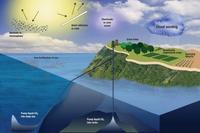
There are two basic geoengineering strategies to reduce climate change: injecting aerosols such as sulfates into the stratosphere to block a portion of the sun’s radiation and thereby cool the Earth, much as volcanic emissions do; and the large-scale removal of carbon dioxide from the atmosphere. The aerosol-injection approach is much more likely to be pursued at current stages of technological development. Scientists say that in order to avoid the need for geoengineering, which could have enormous unforeseen consequences, the international community should pursue increased deployment of nuclear power plants, which do not emit carbon dioxide, to address the climate crisis. Many climate scientists are generally supportive of nuclear engineering and less fearful of it than they are of geoengineering.
-
-
Odds of storm waters overflowing Manhattan seawall up 20-fold, new study says
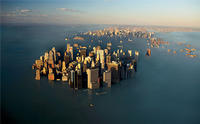
Maximum water levels in New York harbor during major storms have risen by nearly two and a half feet since the mid-1800s, making the chances of water overtopping the Manhattan seawall now at least twenty times greater than they were 170 years ago, according to a new study. Whereas sea-level rise, which is occurring globally, has raised water levels along New York harbor by nearly a foot and a half since the mid-nineteenth century, the research shows that the maximum height of the city’s “once-in-10-years” storm tide has grown additionally by almost a foot in that same period.
-
More headlines
The long view
The Surprising Reasons Floods and Other Disasters Are Deadlier at Night
It’s not just that it’s dark and people are asleep. Urban sprawl, confirmation bias, and other factors can play a role.
Why Flash Flood Warnings Will Continue to Go Unheeded
Experts say local education and community support are key to conveying risk.
